Namazu-San, the Lucky Catfish
Thanks to wordplay, the earthquake-causing catfish monster has become a god of confidence at this shrine.
Originally established in 598 CE, Raiden Shrine in the Gunma town of Itakura is known as Japan’s main center of thunder worship; for centuries, people have prayed to the gods of thunder here for protection from natural disasters.
While the shrine itself is an impressive sight, with the current building dating back to 1835, it is also home to a hidden gem lying in an annex building just across the road.
Namazu-San is a sleek brass sculpture of a catfish with a slight smile, comfortably placed on a long cushion. Guarding him is a group of red demons representing thunder. In Japanese folklore, the giant subterrestrial catfish is considered to be the cause of earthquakes, often subdued by another god of thunder. Since the Middle Ages, this association has been common knowledge and reflected everywhere in Japanese culture, from traffic signs to Pokémon.
The brazen catfish of Raiden Shrine is not only worshipped for protection against earthquakes, but also for his confidence-boosting mojo. The unattended shrine lets visitors take a handkerchief for a donation of 300 yen and wipe Namazu-San with it, rubbing off his charm so that they can take it home for good luck.
The unusual belief and practice derive from a simple wordplay, something Japanese culture traditionally appreciates. To put it simply, “earthquake” and “confidence” are homophonous in Japanese, written as 地震 and 自信 respectively but both read jishin.

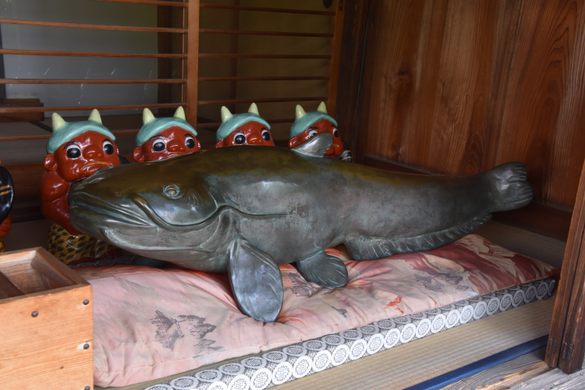
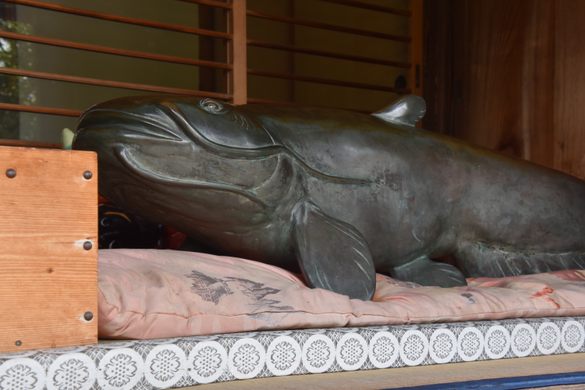
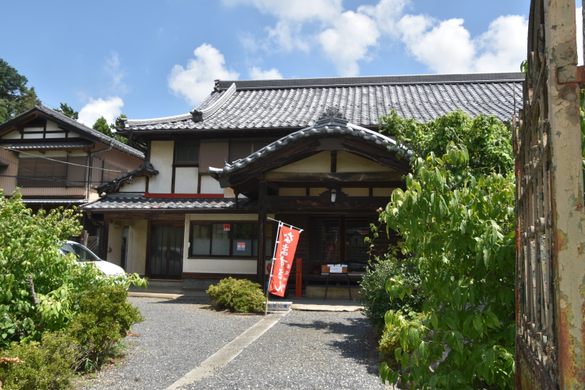
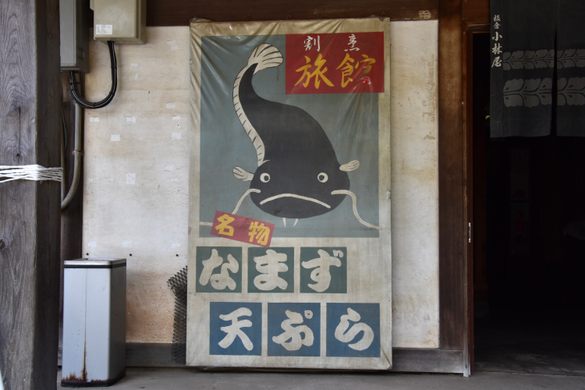
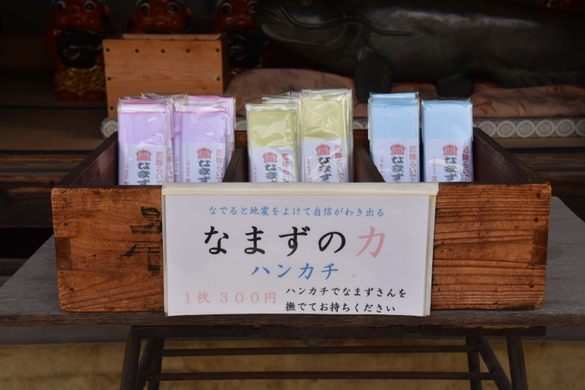
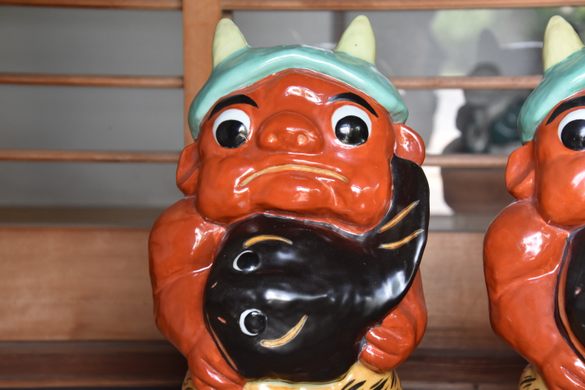
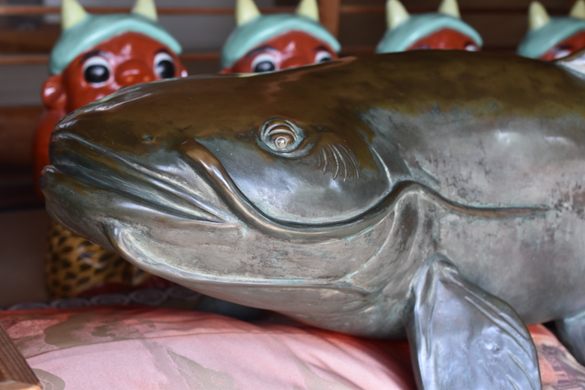



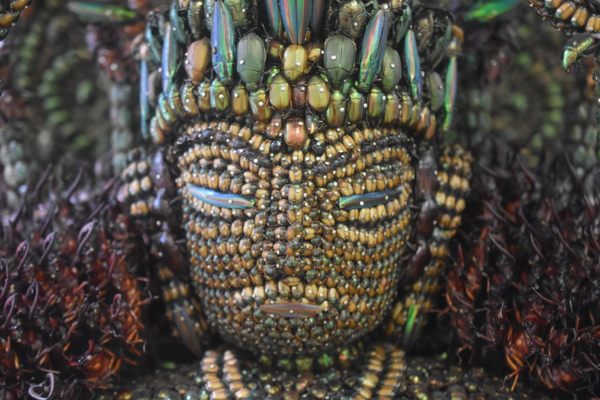

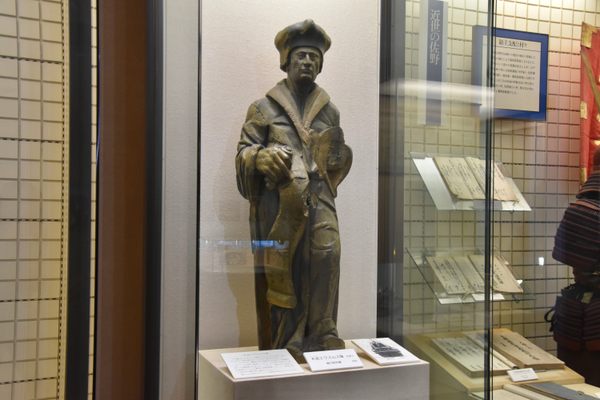
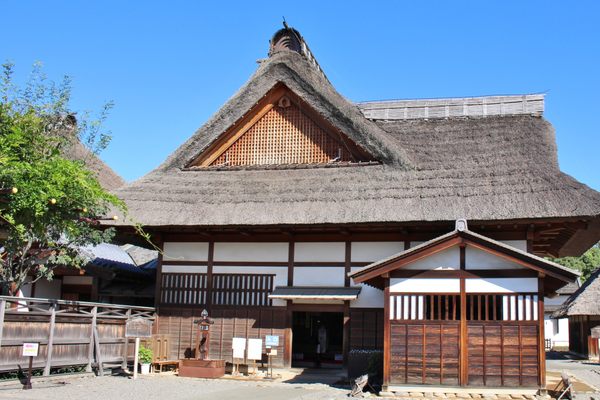

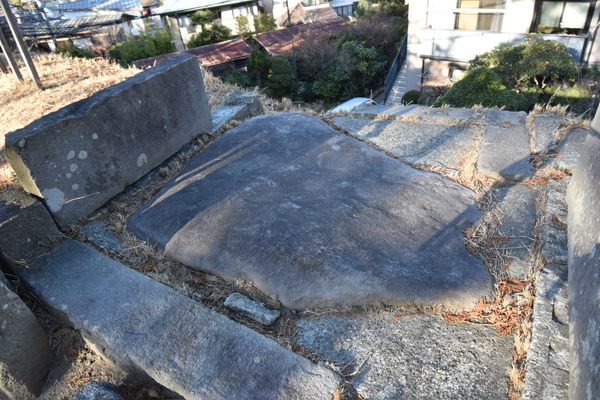

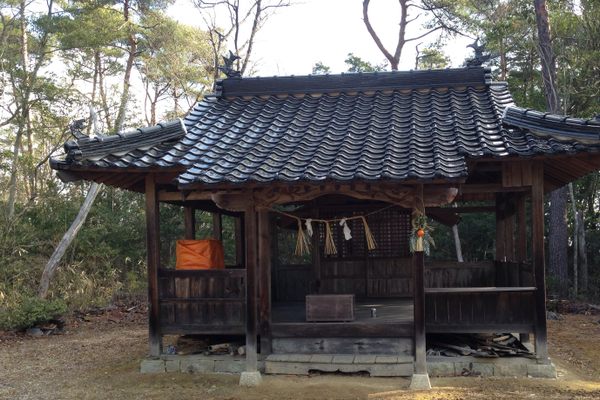

Follow us on Twitter to get the latest on the world's hidden wonders.
Like us on Facebook to get the latest on the world's hidden wonders.
Follow us on Twitter Like us on Facebook